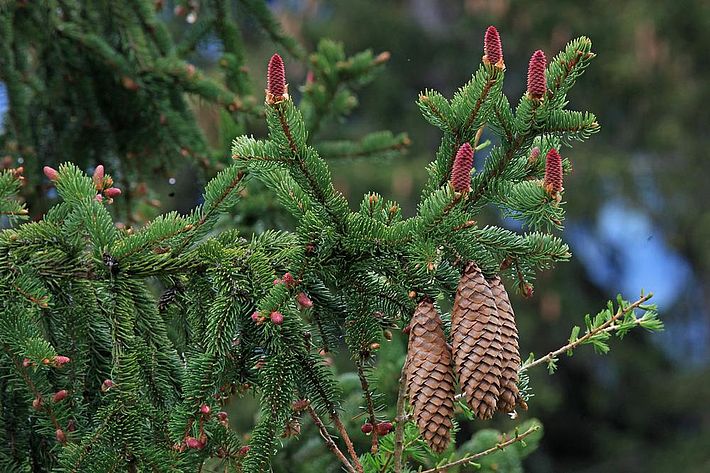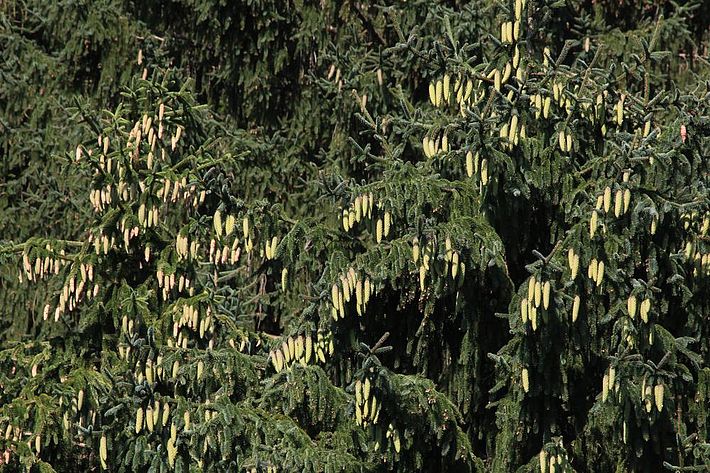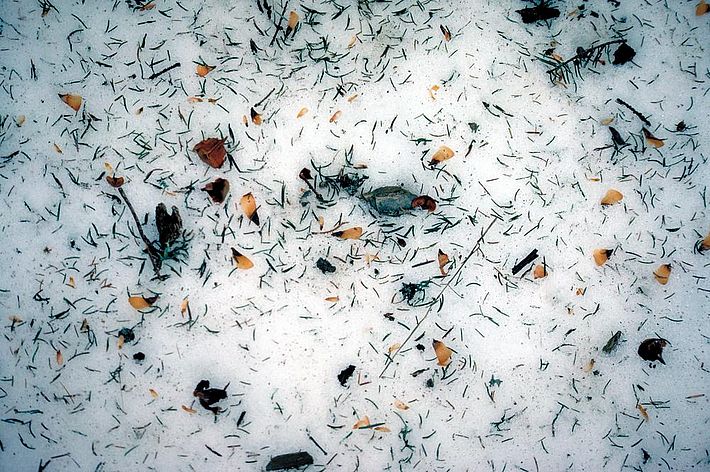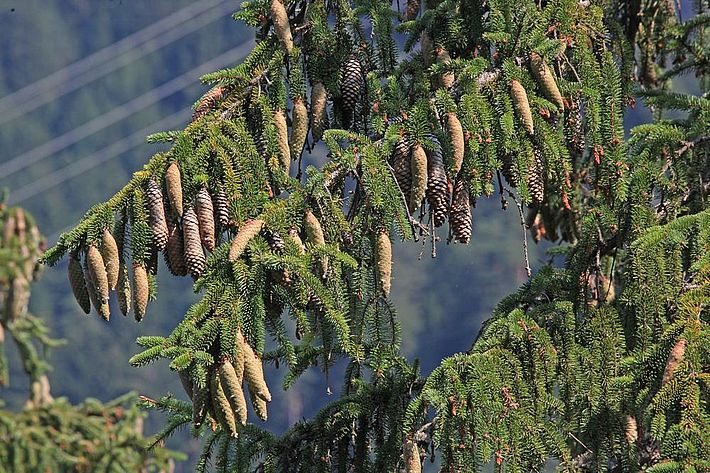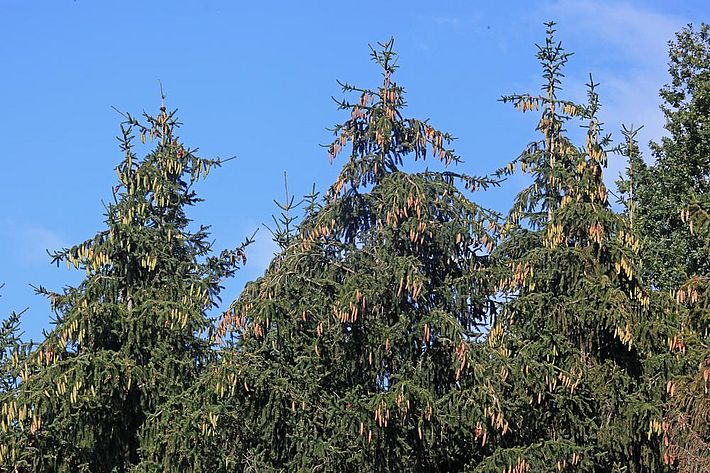Picea abies (L.) H. Karst. | F: Epicéa, sapin rouge | I: Abete rosso, peccio | R: Pign | D: Fichte/Rottanne
General information on the Norway spruce
With 39.4% of the total number of stems, Norway spruce is the most widespread tree species in Switzerland1. It grows between 250 and 2200 m a.s.l., with its main distribution area being in the Alps, the Pre-Alps and the western Jura, while the extensive occurrences at lower altitudes are largely anthropogenic1.
Blooming
The flowers of Norway spruce are unisexual and bloom from mid-April to mid-June. Female flowers are initially in red, erect cones that gradually slope downwards and turn green in summer and later brown (Figs. 1 and 2).
Fruits
Ripe fruits of Norway spruce are found in the downward hanging cones that open under heat in late winter. They are small and winged (Fig. 3) and can be spread by the wind over several dozen metres and much further during storms. Empty cones often remain hanging on the branches until the following autumn (Fig. 1).
Seed masting behaviour
Norway spruce produces a large number of cones every 2 to 8 years, depending on altitude and latitude2,3. The extent of a mast depends largely on the number of flowers, the production of which is initiated by mild temperatures and little precipitation in the preceding summer4. The amount of pollen produced, which can be up to 160 kg ha-1 in pollen-rich years5, also has a major influence. The number of fertilised flowers and the development of the cones is severely reduced by precipitation and frost during the pollen season, while later climatic conditions only play a subordinate role4.
Assessment of seed mast
Time: July to the end of August, at higher altitudes until mid-September. The extent of the current cone attachment can only be determined in Norway spruce in summer, as long as the cones are still green and can be clearly distinguished from last year's cones, which often remain on the tree for a long time (Fig. 4).
Assessment of fruiting: Seed masting is a phenomenon that does not affect the individual tree but encompasses entire stands in a larger geographical area. The intensity of a spruce mast can be assessed according to the following key:
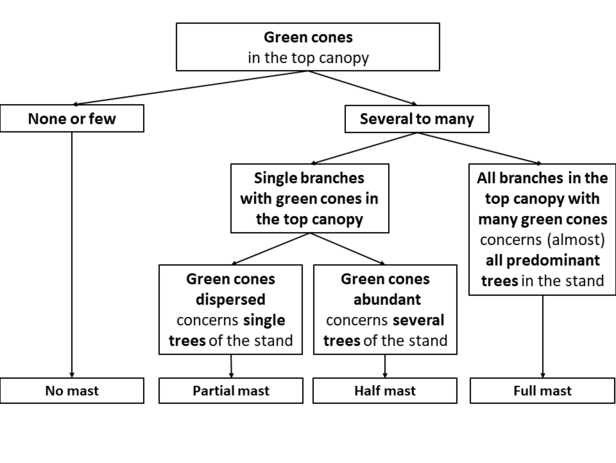
1 Brändli UB (1996) Die häufigsten Waldbäume der Schweiz. Ber. Eidg. Forsch.anst. Wald Schnee Landsch. 342
2 Burri A, Burkart A, Moritzi M, Moser B, Wasem U, Wohlgemuth T (2016) Samenproduktion bei Waldbäumen: eine neue Webseite. Zürcher Wald 1/16: 23-27
3 Selås V (1997) Cyclic population fluctuations of herbivores as an effect of cyclic seed cropping of plants: the mast depression hypothesis. Oikos 80: 257-268
4 Tjoelker M G, Boratyński A, Bugala W (2007) Biology and ecology of Norway spruce. Springer, Dordrecht, The Netherlands
5 www.waldwissen.net
Download
-
Artenblatt Rottanne 4 MB
